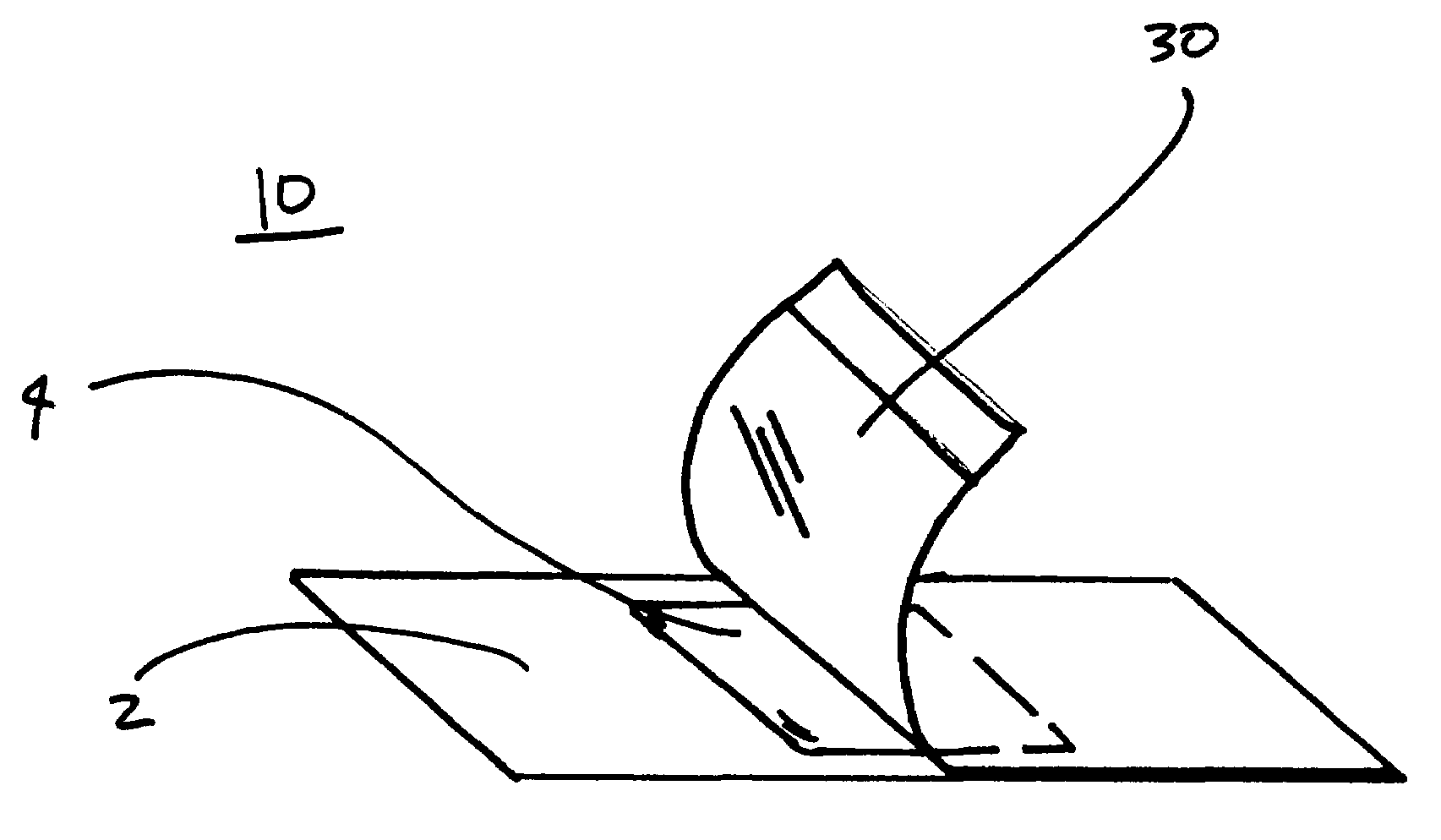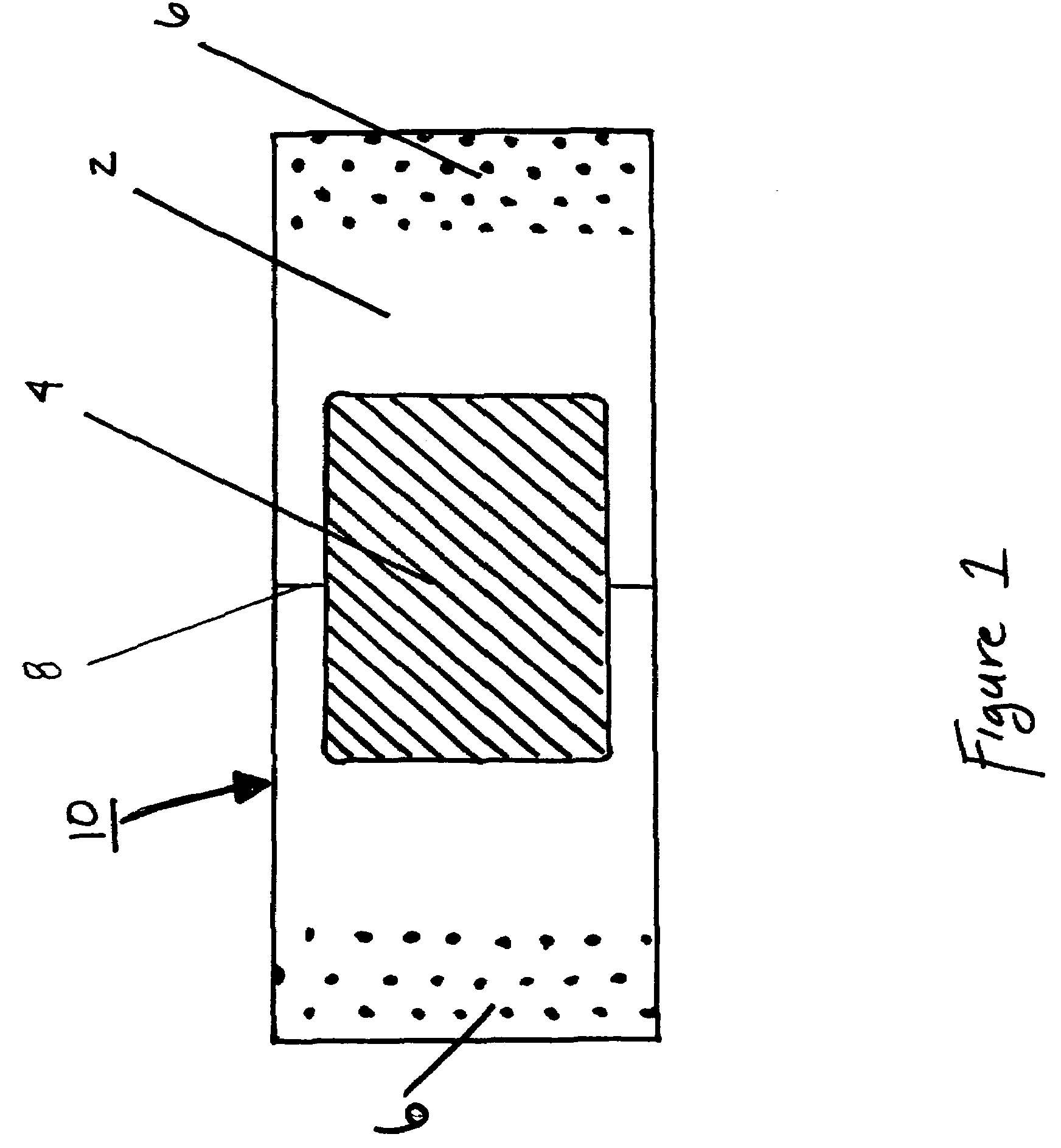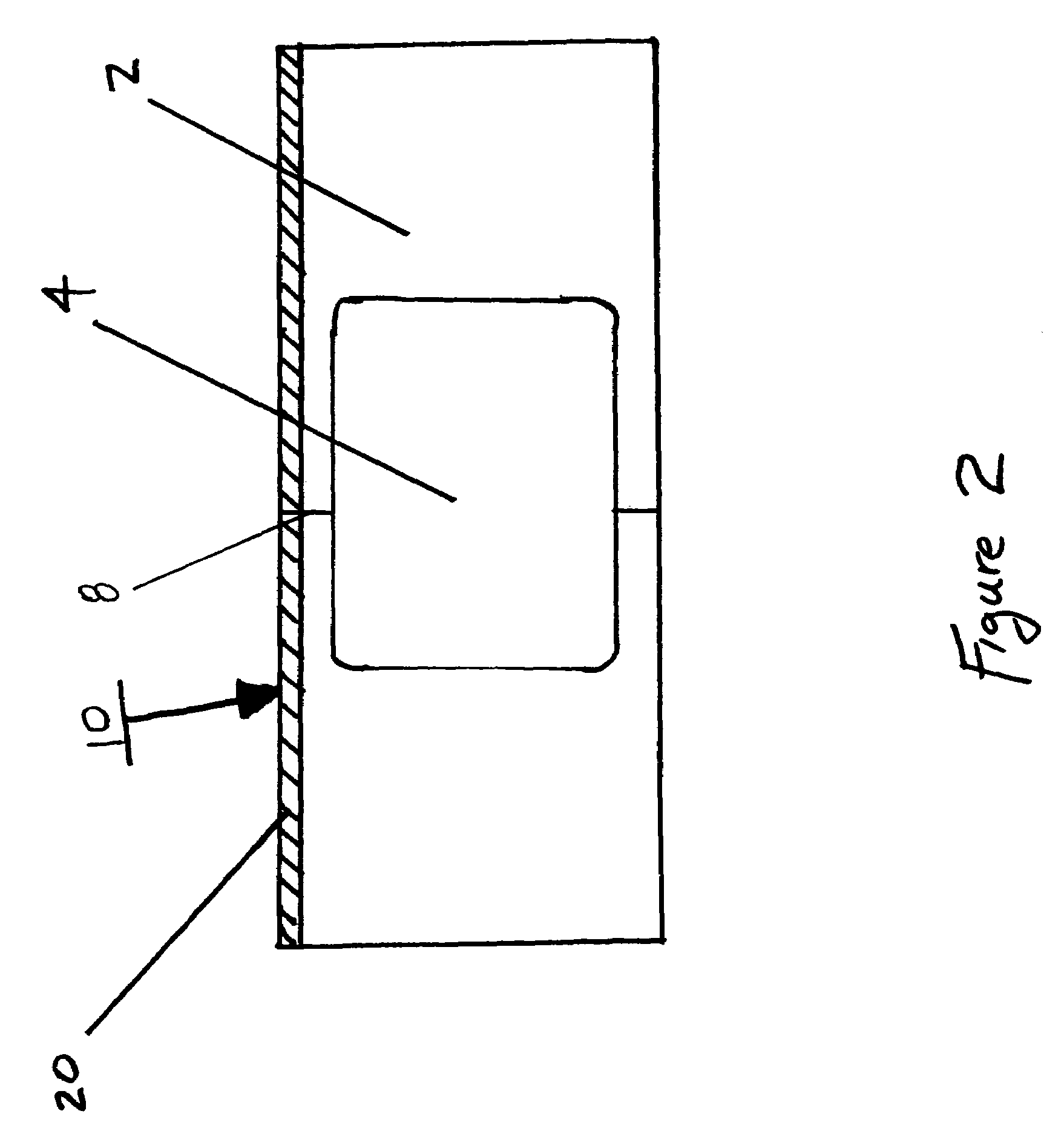Interproximal cavitation detection device and method
a detection device and interproximal cavitation technology, applied in the field of dentistry, can solve the problems of inability to easily recalcify the cavitated surface (remineralized), inability to easily clean the plaque with dental floss, and inability to achieve the effect of interproximal lesions
- Summary
- Abstract
- Description
- Claims
- Application Information
AI Technical Summary
Benefits of technology
Problems solved by technology
Method used
Image
Examples
example 1
[0032]A Columbia™ typodont artificial teeth and jaw model showing a distal surface with a simulated cavity created with a #4FG bur was used to replicate a human mouth. A polyester fabric strip was cut to size of 7×70 mm to serve as the substrate.
[0033]Polyvinyl putty was applied to the substrate by placing a 0.20 mm thick plastic stencil having a 4×9 mm opening on one edge. The open edge of the stencil was aligned with the edge of the substrate strip. A small portion of the putty was placed on the stencil. With the standard microscope slide held at a sharp angle, the putty was applied to the substrate by dragging the microscope slide across the stencil opening. A resulting 4×9 mm and 0.20 mm impressionable surface was disposed on the substrate.
example 2
[0034]The following is a prophetic exemplary method for detection of a cavitated interproximal surface from a caries lesion.
[0035]The teeth in question are professionally cleaned and polished, including flossing, to remove miscellaneous debris that would interfere with the detection process. The interproximal surface of the tooth in question is then air-dried. A sterile promixal cavitation detection device is removed from its packaging.
[0036]With the leading rigid edge, the device is inserted into the interproximal space making sure to avoid premature contact of the impressionable surface against the tooth. The impressionable surface is then aligned with the lesion using a visual indicator by sliding the device laterally thereby bringing the impressionable surface into the interproximal embrasure space and mated therewith. Pressure is applied against the interproximal surface of the tooth with the impressionable material by pulling the ends of the device with equal pressure toward t...
PUM
 Login to View More
Login to View More Abstract
Description
Claims
Application Information
 Login to View More
Login to View More - R&D
- Intellectual Property
- Life Sciences
- Materials
- Tech Scout
- Unparalleled Data Quality
- Higher Quality Content
- 60% Fewer Hallucinations
Browse by: Latest US Patents, China's latest patents, Technical Efficacy Thesaurus, Application Domain, Technology Topic, Popular Technical Reports.
© 2025 PatSnap. All rights reserved.Legal|Privacy policy|Modern Slavery Act Transparency Statement|Sitemap|About US| Contact US: help@patsnap.com



